how to find a function from a graph
Learning Outcomes
- Verify a function using the vertical line test
- Verify a i-to-ane function with the horizontal line test
- Identify the graphs of the toolkit functions
Every bit we accept seen in examples to a higher place, we can represent a role using a graph. Graphs brandish many input-output pairs in a small space. The visual information they provide oftentimes makes relationships easier to understand. We typically construct graphs with the input values forth the horizontal axis and the output values along the vertical centrality.
The most common graphs proper noun the input value [latex]x[/latex] and the output value [latex]y[/latex], and we say [latex]y[/latex] is a function of [latex]10[/latex], or [latex]y=f\left(ten\correct)[/latex] when the function is named [latex]f[/latex]. The graph of the office is the set up of all points [latex]\left(10,y\right)[/latex] in the plane that satisfies the equation [latex]y=f\left(x\correct)[/latex]. If the office is defined for only a few input values, and so the graph of the function is only a few points, where the x-coordinate of each point is an input value and the y-coordinate of each point is the corresponding output value. For example, the black dots on the graph in the graph below tell us that [latex]f\left(0\right)=ii[/latex] and [latex]f\left(half dozen\right)=one[/latex]. However, the set of all points [latex]\left(ten,y\correct)[/latex] satisfying [latex]y=f\left(10\right)[/latex] is a curve. The curve shown includes [latex]\left(0,two\right)[/latex] and [latex]\left(vi,one\right)[/latex] because the curve passes through those points.
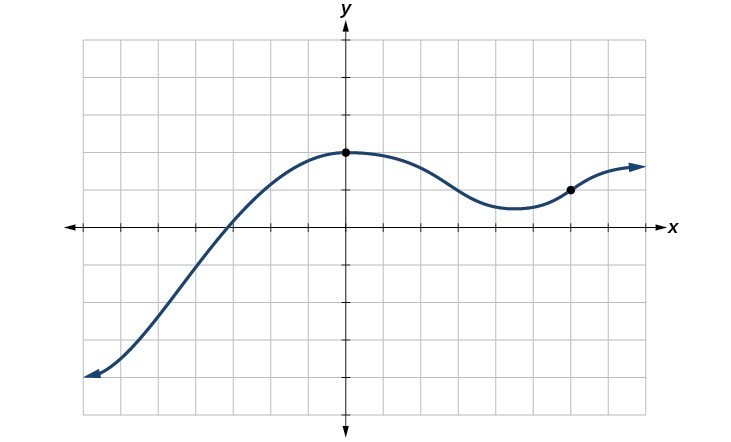
The vertical line test can be used to determine whether a graph represents a function. A vertical line includes all points with a particular [latex]x[/latex] value. The [latex]y[/latex] value of a point where a vertical line intersects a graph represents an output for that input [latex]x[/latex] value. If nosotros can draw any vertical line that intersects a graph more than once, then the graph does not define a function because that [latex]x[/latex] value has more than than 1 output. A function has simply 1 output value for each input value.

How To: Given a graph, utilize the vertical line examination to determine if the graph represents a function.
- Inspect the graph to see if whatsoever vertical line drawn would intersect the curve more than in one case.
- If in that location is any such line, the graph does not stand for a role.
- If no vertical line can intersect the curve more than once, the graph does represent a role.
Instance: Applying the Vertical Line Test
Which of the graphs stand for(s) a function [latex]y=f\left(x\right)?[/latex]

Endeavor It
Does the graph below represent a function?
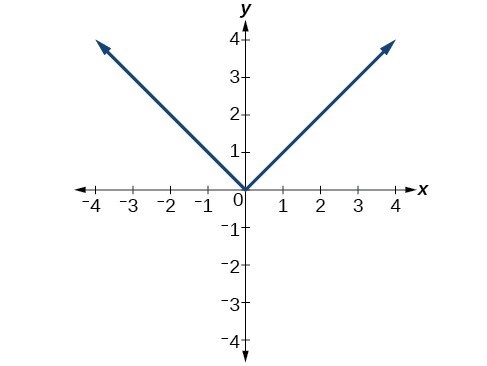
The Horizontal Line Test
Once we have determined that a graph defines a function, an like shooting fish in a barrel way to make up one's mind if it is a one-to-ane function is to apply the horizontal line test. Draw horizontal lines through the graph. A horizontal line includes all points with a particular [latex]y[/latex] value. The [latex]ten[/latex] value of a point where a vertical line intersects a function represents the input for that output [latex]y[/latex] value. If nosotros tin can draw whatsoever horizontal line that intersects a graph more than than once, then the graph does non correspond a function because that [latex]y[/latex] value has more than than one input.
How To: Given a graph of a function, use the horizontal line test to make up one's mind if the graph represents a i-to-one part.
- Inspect the graph to run across if whatsoever horizontal line fatigued would intersect the bend more than than once.
- If there is any such line, the function is not one-to-one.
- If no horizontal line can intersect the curve more than once, the function is one-to-one.
Case: Applying the Horizontal Line Test
Consider the functions (a), and (b)shown in the graphs below.

Are either of the functions one-to-one?
Identifying Basic Toolkit Functions
In this text we explore functions—the shapes of their graphs, their unique characteristics, their algebraic formulas, and how to solve problems with them. When learning to read, nosotros showtime with the alphabet. When learning to do arithmetic, nosotros kickoff with numbers. When working with functions, it is similarly helpful to have a base ready of building-block elements. Nosotros call these our "toolkit functions," which form a fix of bones named functions for which we know the graph, formula, and special properties. Some of these functions are programmed to private buttons on many calculators. For these definitions we will apply [latex]10[/latex] every bit the input variable and [latex]y=f\left(10\right)[/latex] as the output variable.
We volition run across these toolkit functions, combinations of toolkit functions, their graphs, and their transformations frequently throughout this book. Information technology volition be very helpful if nosotros can recognize these toolkit functions and their features rapidly past proper name, formula, graph, and basic tabular array properties. The graphs and sample table values are included with each function shown below.
| Toolkit Functions | ||
|---|---|---|
| Proper name | Function | Graph |
| Abiding | [latex]f\left(x\correct)=c[/latex], where [latex]c[/latex] is a abiding | 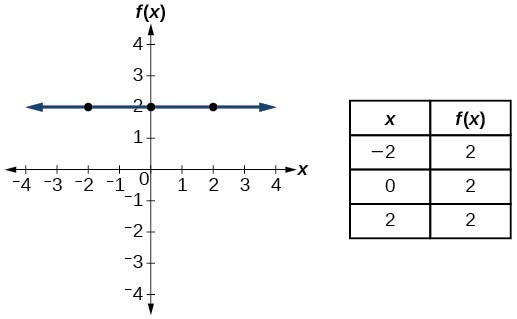 |
| Identity | [latex]f\left(x\right)=x[/latex] |  |
| Absolute value | [latex]f\left(x\right)=|x|[/latex] | 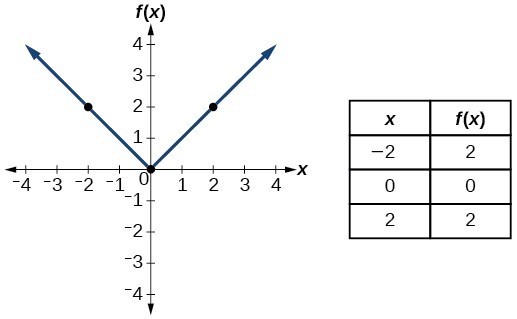 |
| Quadratic | [latex]f\left(x\right)={x}^{2}[/latex] |  |
| Cubic | [latex]f\left(x\right)={x}^{3}[/latex] | 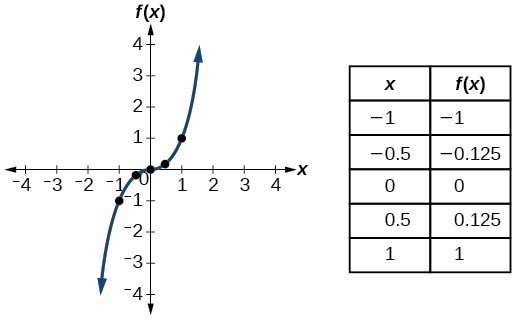 |
| Reciprocal/ Rational | [latex]f\left(10\correct)=\frac{1}{10}[/latex] | 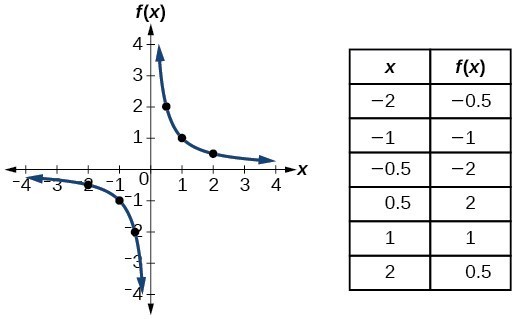 |
| Reciprocal / Rational squared | [latex]f\left(x\right)=\frac{i}{{ten}^{ii}}[/latex] | 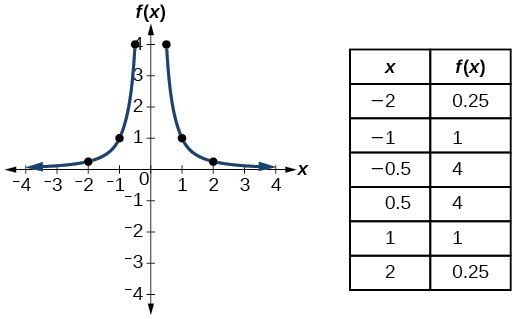 |
| Square root | [latex]f\left(x\right)=\sqrt{x}[/latex] | 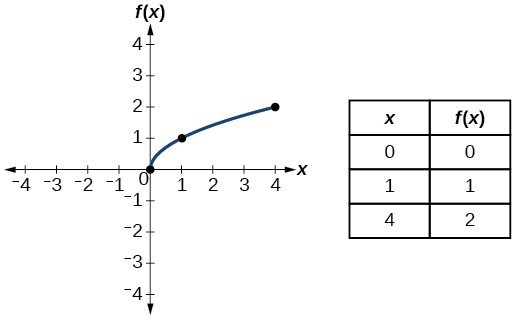 |
| Cube root | [latex]f\left(x\correct)=\sqrt[3]{x}[/latex] | 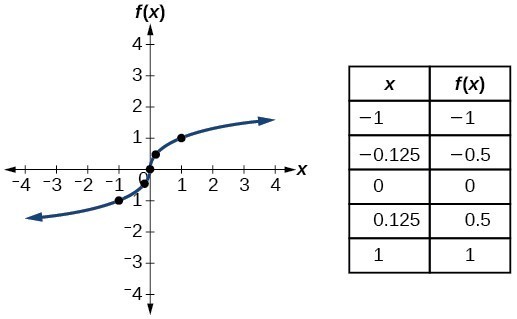 |
Try It
Try It
In this exercise, yous volition graph the toolkit functions using an online graphing tool.
- Graph each toolkit function using role annotation.
- Make a table of values that references the function and includes at least the interval [-5,5].
Contribute!
Did you have an idea for improving this content? We'd love your input.
Improve this pageLearn More than
Source: https://courses.lumenlearning.com/waymakercollegealgebra/chapter/identify-functions-using-graphs/
Posted by: sandbergcasonctin.blogspot.com

0 Response to "how to find a function from a graph"
Post a Comment